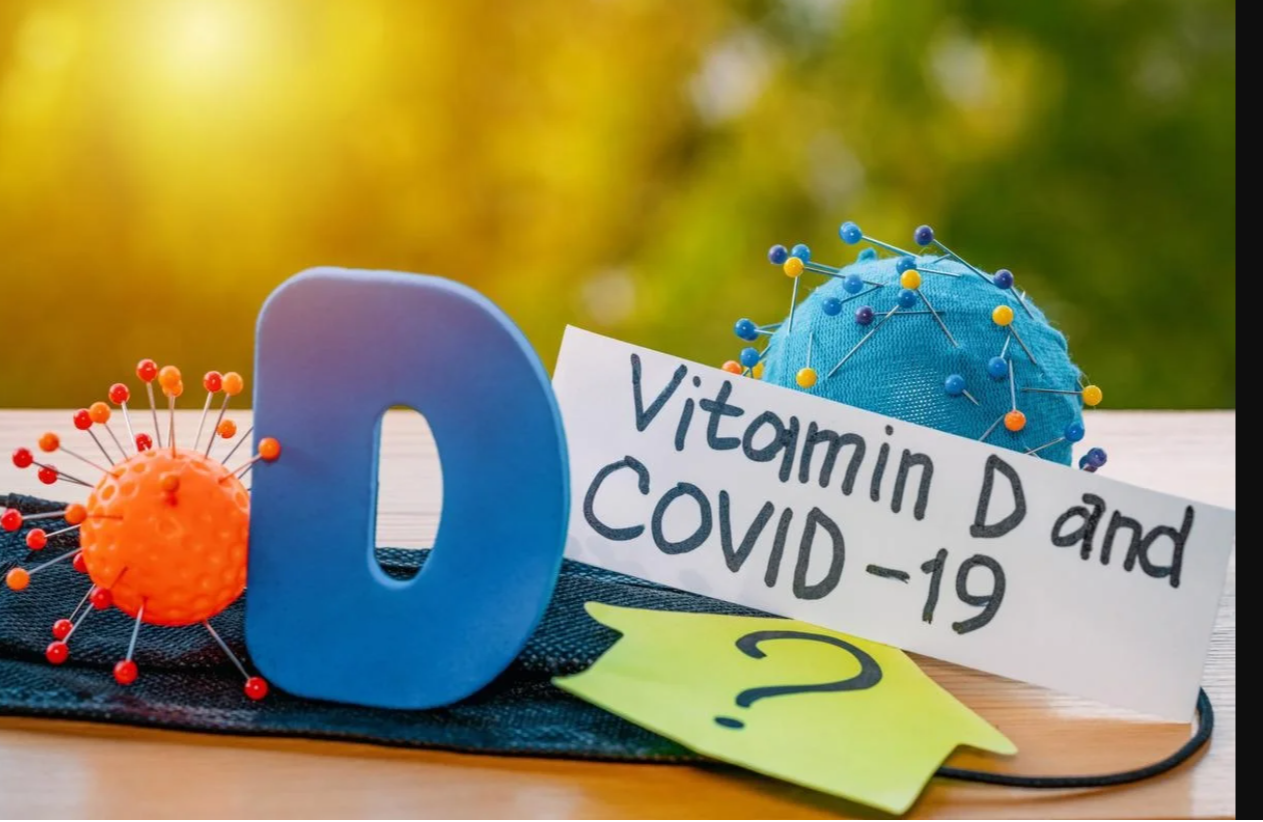(Akiit.com) From the beginning of the pandemic, I have strongly advised use of vitamin D in the battle against COVID. Excellent research has found that one needs a blood level of at least 50 ng/ml. Sadly, very few people get their blood tested for vitamin D. Past studies have generally found Americans have much lower than optimal levels.
Here is the big point: If public health agencies had pushed the wide use of vitamin D early in the pandemic, especially 5,000 units or more daily, there surely would have been virtually no pandemic. And no big need for COVID vaccines. It is a disgrace that governments worldwide have not promoted use of D and that physicians have not urged their patients to take it. All this is inexplicable, unless you recognize the evil influence of Big Pharma. All the U.S. government officials who pushed vaccines over vitamin D, especially Tony Fauci, should be criminally prosecuted.

Personally, I have been taking 8,000 units daily for some time, and when I pushed my doctor to order a test for D my result was in the low 60s. In addition, to strengthen my immunity I also take quercetin, zinc and vitamin C. I also keep a supply of pills with very high concentration of the key D chemical just in case of serious symptoms.
For those contemplating getting a vaccine or booster shot, it pays to seriously consider instead a high daily dose of D, including for your children. Unlike vaccines, with their multitude of serious adverse impacts, including death, there are no negative impacts of Vitamin D. Note that even today about 300 Americans are dying every day from COVID despite all the vaccine and booster shots. And if you choose the D strategy, please demand a blood test for D so you can confirm you are taking enough to get to at least 50 ng/ml in your blood.
Below is a slightly edited set of conclusions of a very new, detailed review of D titled: “Rapidly Increasing Serum 25(OH)D Boosts the Immune System, against Infections – Sepsis and COVID-19.” It is not easy reading, but very high quality.
Conclusions from review article:
- A robust immune system is essential to overcome infections without complications. It depends on the adequate entry of vitamin D3 and 25(OH)D into immune cells for generating calcitriol. The latter required maintaining a serum 25(OH)D concentration of over 50 ng/mL.
- Therefore, to successfully manage and overcome an infectious epidemic or a pandemic, it is crucial to maintain the population’s serum 25(OH)D concentration above the mentioned therapeutic level. In acutely ill persons, especially those with vitamin D deficiency having infections, raising serum D3 and 25(OH)D concentrations quickly is paramount and life-saving. In these urgent situations, 0.5 to 1.0 mg of calcifediol can raise serum 25(OH)D concentrations above the minimum therapeutic levels of 50 ng/mL in four hours and boosts the immune system within a day that facilitates to overcome infections. While calcifediol raises serum 25(OH)D within hours, the oral administration of even high doses of vitamin D takes three to five days to raise serum 25(OH)D concentrations. This delay is due to its less efficient absorption than calcifediol and the need for vitamin D to undergo 25-hydroxylation in the liver, a rate-limiting step.
- In acutely ill patients, as in those in the ICU, administering even high doses of oral D3 may take a week to increase serum 25(OH)D concentration. Therefore, it is unhelpful in emergencies like SARS-CoV-2 infections. With a weight-based, single dose of calcifediol, as described in Table 3, circulatory 25(OH)D concentrations are maintained for approximately 8 to 14 days. In contrast, parental high dose vitamin D3, administered as loading or bolus, will maintain serum 25(OH)D concentrations between two to three months. Although the circulatory half-life of D3 is short, due to the larger initial doses, it maintains a higher circulatory concentration of both Nutrients 2022, 14, 2997 23 of 30 D3 and 25(OH)D for several weeks – partly because of the release from the storage in fat and muscle tissues. Therefore, with calcifediol, one should administer a suitable higher dose of vitamin D3. This can be done using 50,000 IU vitamin D capsules in outpatients’ setups and emergencies.
- Nevertheless, considering the non-genomic beneficial actions of vitamin D3 and its longer duration of physiological actions described above, the combination of D3 and calcifediol provides better clinical outcomes than either alone. Therefore, administering the proper doses of D3 and calcifediol is recommended for patients with infections as an adjunct therapy at the first outpatient or inpatient encounter. Multiple observational and RCTs have demonstrated that serum 25(OH)D concentrations (pre-infection or on admission) inversely correlated with the incidence, severity, and rates of death from COVID-19.
- Meanwhile, vitamin D supplementation significantly reduces complications and deaths. Irrespective of the regimen, initial bolus or loading doses of vitamin D and/or calcifediol should follow a daily or weekly, longer-term maintenance regimen. The described schedules in the three tables are highly cost-effective ways to raise serum 25(OH)D concentrations and maintain it to keep the immune system on high alert. Consequently, it prevents and/or reduces infections and complications from COVID-19 and other infections. For non-obese 70 kg adults, the recommended longer-term vitamin D3 maintenance dose is 5000 IU/(0.125 µg) day or 50,000 IU (1.25 mg)/week (or every ten days).
- Nevertheless, this regimen takes a few months to reach the desired serum 25(OH)D concentration above 50 ng/mL. It can be expedited by ingesting vitamin D, 10,000 IU/day (250 µg/day) for 8 to 10 weeks and reverting to the daily dose of 5000 IU. Rectifying vitamin D deficiency costs less than 0.1% of the costs related to evaluating and treating comorbidities and complications associated with vitamin D deficiency. For example, in western countries, vitamin D supplementation to maintain serum 25(OH)D costs approximately $8 per person/year, versus an average cost of $5000 to $15,000/year per person to manage vitamin D deficiency-associated diseases and related complications. Despite a favorable cost-benefit ratio, availability as a non-prescription over-the-counter nutrient, and exemplary safety profile, millions of people become ill due to vitamin D deficiency requiring medical attention, markedly increasing the cost of healthcare. Vitamin D deficiency increases healthcare costs, absenteeism and opportunity costs and reduces productivity. Considering the described significant benefits associated with disease prevention, reduced illness severity, reduced absenteeism, complications and deaths, improved wellbeing and higher productivity, the calculated overall cost-benefit ratio for administered vitamin D3 supplements exceeds 1 in 20,000.
- Despite these data, no country is yet to recommend vitamin D (or has published proper guidelines with the right doses) for disease prevention or recommended it as an adjunct therapy to prevent complications and deaths from infections or other diseases. This report provides rationale, justifications, straightforward guidance, and practical tables that provide regimens for use in clinical practice for achieving and maintaining the serum 25(OH)D concentrations needed to ensure a robust immune system that helps to overcome infections, including SARS-CoV-2.
Columnist; Joel S. Hirschhorn









Leave a Reply